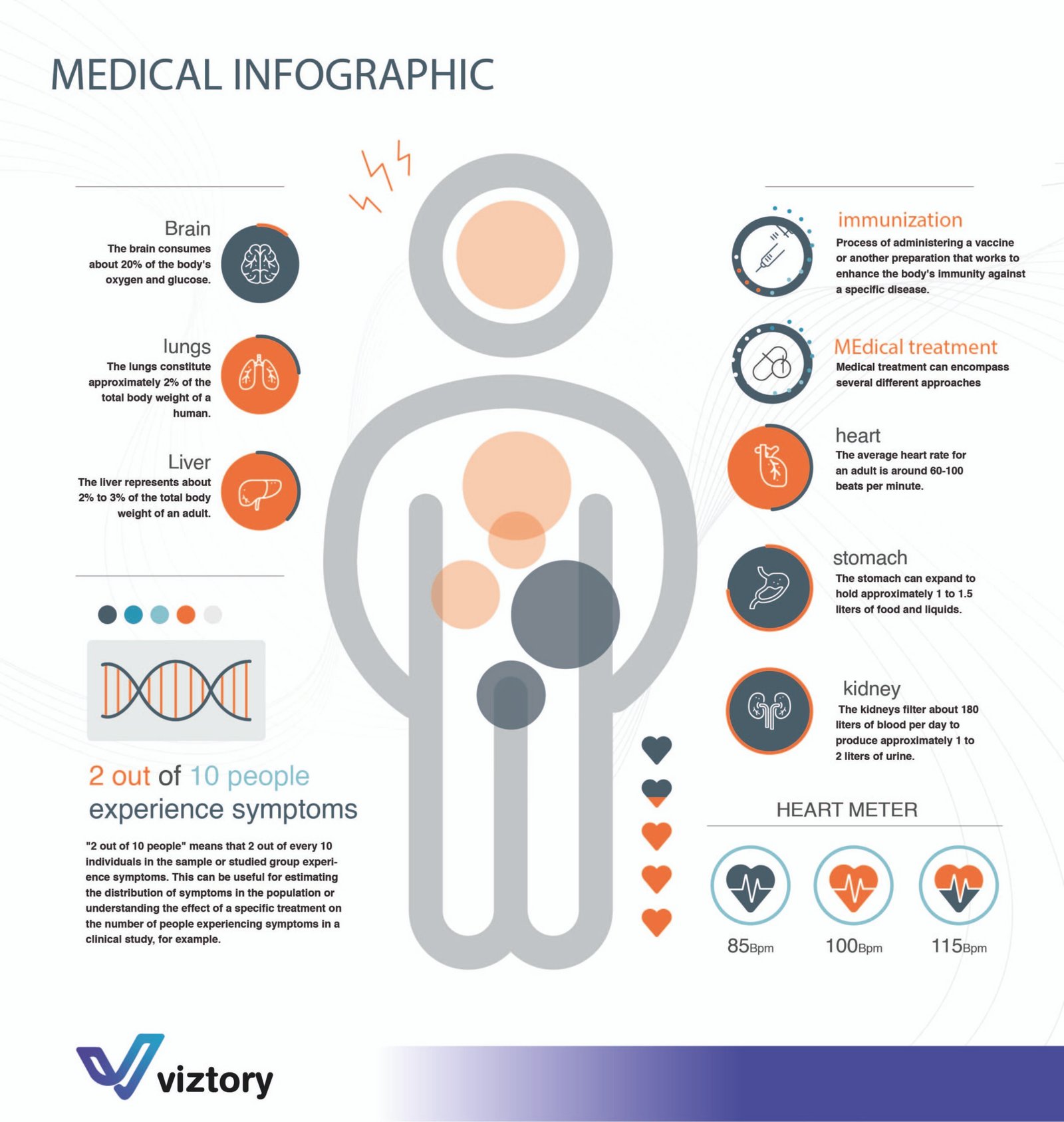Understanding Your Body: A Medical Infographic Overview
-
May, Thu, 2024
In the intricate world of human biology, understanding the fundamental aspects of our bodies is crucial for maintaining health and wellness. This medical infographic provides a succinct yet comprehensive overview of key organs and their functions, as well as insights into common medical treatments and health metrics.
Key Organs and Their Functions
Brain:
Function: The brain is the powerhouse of the body, consuming about 20% of the body’s oxygen and glucose. It is responsible for controlling most of the functions of the body and mind.
Lungs:
Function: The lungs are essential for respiration, constituting approximately 2% of the total body weight. They facilitate the exchange of oxygen and carbon dioxide, crucial for cellular function.
Liver:
Function: The liver plays a vital role in metabolism, detoxification, and protein synthesis. It represents about 2% to 3% of the total body weight of an adult.
Medical Treatments and Health Practices
Immunization:
Description: Immunization involves administering a vaccine to enhance the body’s immunity against specific diseases. This preventive measure is crucial for controlling and eliminating life-threatening infections.
Medical Treatment:
Description: Medical treatment encompasses various approaches to address health issues, from medication and surgery to lifestyle changes and therapy.
Vital Health Metrics
Heart:
Average Heart Rate: The average heart rate for an adult is around 60-100 beats per minute. Monitoring heart rate can provide insights into cardiovascular health and fitness levels.
Stomach:
Capacity: The stomach can hold approximately 1 to 1.5 liters of food and liquids. It plays a significant role in digestion and nutrient absorption.
Kidney:
Function: The kidneys filter about 180 liters of blood per day to produce approximately 1 to 2 liters of urine. They are essential for waste removal and fluid balance.
Health Statistics
Symptom Prevalence: It is reported that 2 out of 10 people experience symptoms of health issues. This statistic is crucial for understanding the distribution of symptoms in the population and the effectiveness of specific treatments.
Heart Rate Monitoring
Heart Meter:
85 bpm: Indicative of a resting heart rate, suggesting a state of relaxation or sleep.
100 bpm: Within the normal range, typically observed during moderate activity.
115 bpm: Higher heart rate, often seen during exercise or stress.
Conclusion
Understanding the basic functions of our key organs and the importance of medical treatments and health metrics can empower individuals to make informed decisions about their health. This infographic serves as a valuable educational tool, providing clear and concise information to help people stay informed and proactive about their well-being.

